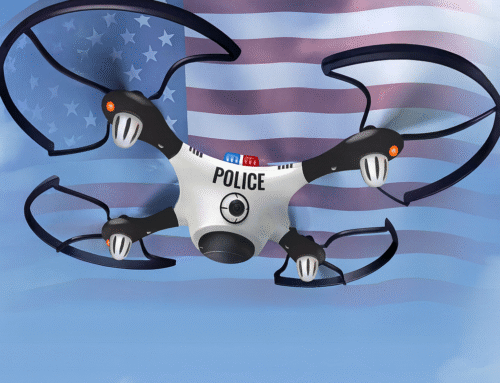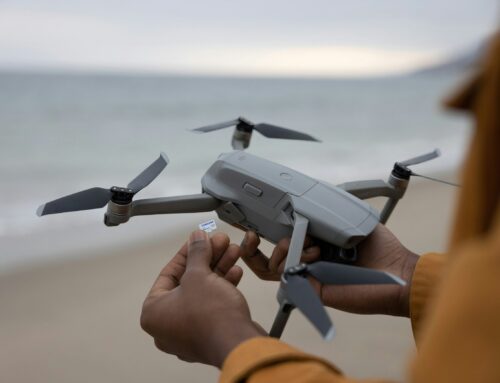The M400, released on June 10, 2025, is a purpose-built workhorse designed for enterprise missions. With nearly an hour of flight time, precision obstacle sensing, heavy payload capacity, and intelligent flight features, brings plenty to UAV operations. Whether you’re managing infrastructure inspections, emergency search operations, or large-scale surveying, this aircraft gives you the operational flexibility and technical capacity you need.
In this guide, you’ll get a clear, detailed understanding of what the Matrice 400 offers, from specs and sensors to deployment scenarios and controller setup. What you actually need to know to fly and operate the M400 with confidence.
How to Use the DJI Matrice 400
Charging and Powering On
Before anything else, activate the internal battery of the remote controller by charging it. You can also install the WB37 battery to trigger activation.
For the drone:
- Use the TB100 intelligent flight battery.
- Plug it into the BS100 station.
- Choose either fast charge (45 minutes with 220V) or silent mode (110 minutes).
The charging station can manage three TB100 batteries and two WB37s simultaneously. That makes mission prep quicker and reduces downtime between flights. It also lets you switch modes between quiet and rapid charging depending on where and how you’re charging.
To power on:
- Press the power button once, then press and hold it for two seconds.
- Do this for both the aircraft and the controller.
Activation requires internet. Launch the DJI Pilot 2 app, follow the on-screen steps, and you’re ready. It’s a one-time process per device.
Assembling the Drone
Start by getting the aircraft ready:
- Install the Landing Gear
- Slide and secure the legs into place.
- Unfold the Aircraft Arms
- Make sure the propellers are locked into position.
- Mount the Gimbal Camera
- Attach the payload (e.g., Zenmuse H30T) to the DGC2.0 gimbal port.
- Insert the TB100 Battery
- Align and press into the battery compartment until it clicks.
The drone has status LEDs, a power button, and labeled ports (FPV camera, E-Port V2, beacon, and LiDAR). Be sure to verify that each connection is firm and each payload is mounted correctly. Loose modules can compromise safety.
If you’re using custom payloads or third-party accessories, check the compatibility through DJI’s Payload SDK. The gimbal mounts are hot-swappable but should always be powered down before switching in the field.
Preparing the Remote Controller
The DJI RC Plus 2 needs a WB37 battery or charging through USB-C.
Once charged:
- Insert an SD card if needed.
- Connect any accessories (cellular dongle, HDMI, USB).
- Launch the DJI Pilot 2 app.
The interface offers:
- A customizable home screen
- Live FPV feeds
- Map and AR layers
- Camera control
You can also toggle between real-time map view, camera view, and mission dashboard. The screen is anti-glare and responsive, even in outdoor daylight. Make use of customizable buttons for shortcuts—especially for camera focus, pause flight, and RTH (Return to Home).
For those operating in remote zones, cellular dongles allow you to maintain remote ID and backup video feeds when Wi-Fi is out of reach.
DJI M400 Takeoff and Flight Basics
Before takeoff:
- Set your Return to Home (RTH) behavior and altitude.
- Confirm GPS lock and check weather conditions.
- Calibrate compass and IMU if prompted.
To take off:
- Perform the Combination Stick Command (CSC): Push both sticks diagonally inward and hold for 2 seconds.
- Use the on-screen takeoff button or manual control.
During flight:
- Press the Flight Pause button to make the aircraft hover in place.
- Use the Gimbal Dial and camera control buttons for imaging.
- Toggle Flight Modes between N, S, and F as needed.
To land:
- Lower the left stick slowly.
- Or tap “Return to Home” and let the drone do it automatically.
Always fly line-of-sight unless using relay or FPV monitoring with a visual observer. Battery alerts will appear automatically, but keep an eye on wind changes, altitude shift, and payload balance. Rely on the telemetry as much as the video feed.
Best Practices for New DJI M400 Users
- Always calibrate the compass and IMU before first use.
- Avoid flying near metal structures or strong magnetic fields.
- Use the training mode in DJI Pilot 2 to simulate missions.
- Store batteries at 30–60% charge if not flying soon.
- Keep firmware updated through DJI Pilot 2 with Wi-Fi access.
- Perform full pre-flight checklists before each mission.
- Don’t fly over people, highways, or airports unless you’ve secured waivers.
Once you’ve got the basics down, you can start using advanced features like Airborne Video Relay, Smart Detection, and AR projections confidently. These tools help you get data faster, safer, and with better visibility in complex environments.
For night operations or limited-visibility zones, activate the beacon module and adjust camera ISO to avoid overexposure. You’ll want to combine thermal + optical modes if inspecting utilities or working on search-and-rescue scenarios.
DJI M400 Product Specifications
Here’s the nitty gritty of this UAV, details that shape how you plan, where you fly, and what kind of payloads you can realistically use.
Aircraft Design and Performance
Core Build and Dimensions
The Matrice 400 strikes a careful balance between portability and professional build. Its folded size means you can fit it in the backseat or storage case without removing major parts, making field deployment easier. Its unfolded dimensions give it a solid aerial stance, keeping flight balanced even in challenging wind conditions. The propellers are large enough to generate serious lift while staying efficient on energy. The wide wheelbase improves maneuverability and makes it better at absorbing airframe vibration when using heavier payloads.
- Takeoff weight: ~9.74 kg (with batteries)
- Max takeoff weight: 15.8 kg
- Unfolded size: 980 x 760 x 480 mm
- Folded size: 490 x 490 x 480 mm
- Diagonal wheelbase: 1070 mm
- Propellers: 25 inches
- Operating temperature: -20°C to 50°C
Endurance and Speed
This is a long range drone. But don’t take that to mean reckless flying. Battery life and real-world range depend on your environment, payload, and firmware. Realistically, with wind and onboard equipment, you’re more likely to hit 45–50 minutes of usable airtime. That still leaves you with enough time for corridor mapping, perimeter patrols, or full-length inspection passes without needing to swap batteries.
- Max flight time: 59 minutes (with Zenmuse H30T, no wind)
- Max hover time: 53 minutes
- Max distance: 49 km (no payload)
- Ascent speed: 10 m/s
- Descent speed: 8 m/s
- Max horizontal speed: 25 m/s
- Wind resistance: 12 m/s
- Max altitude: 7000 m
Its speed range lets you match your flying to the mission—from slow, stable hovers to fast data acquisition passes. Even at 7000 meters altitude, it remains stable thanks to its propulsion system and adaptive speed controls. That’s serious altitude, whether you’re working on telecom towers or operating in mountainous terrain.
Sensors and Obstacle Detection
All-Around Awareness
The Matrice 400 is built with omnidirectional vision, a horizontal rotating LiDAR, an upper LiDAR, and six-directional mmWave radar..
- Obstacle detection range: up to 200 m
- Horizontal LiDAR: 0.5–100 m range, 520,000 pts/s, Class 1 laser safety
- Upper LiDAR: 0.5–25 m
- mmWave Radar: Detects power lines up to 50 m
- Downward IR Sensor: 0.3–8 m
This drone can navigate through complex industrial zones, forests, mountains, and near-glass surfaces with accuracy.
Payloads and Customization
If you’re planning missions that go beyond basic photography, this is where you need to pay attention. Payloads define what your drone can actually do. From visual inspections to LiDAR mapping and thermal scans, how you customize the Matrice 400 directly affects your results.
Payload Capacity
- Max payload: 6 kg
- Single gimbal: 1.4 kg
- Dual gimbals: 0.95 kg each
- Third port (quick release): up to 3 kg
- Third port (screw lock): up to 6 kg
You can mount up to 7 payloads simultaneously across four E-Port V2 connectors.
Supported Payloads
The drone works with both DJI and third-party payloads:
- Zenmuse H30T: 5 modules (thermal, NIR, zoom, wide, laser rangefinder)
- Zenmuse L2: LiDAR and 4/3 CMOS camera for mapping
- Zenmuse P1: Full-frame sensor for photogrammetry
- Zenmuse S1: High-powered spotlight with LEP laser
- Zenmuse V1: Loudspeaker
- Manifold 3: High-performance onboard computer
If your work spans thermal imaging, SAR, inspection, or mapping, this drone has the flexibility to deliver.
See how it compares with current heavyweights: Top 14 Thermal Drones Based On Imaging Systems & Flight Performance
Video Transmission & Remote Control with the Matrice 400
Reliable, long-range video transmission is critical when you’re flying beyond visual line of sight or navigating complex industrial spaces. The Matrice 400 takes this seriously, delivering enterprise-grade performance and clarity across extended distances.
O4 Enterprise Enhanced System
- Max range: 40 km (FCC), 20 km (CE)
- Video feed: Triple-channel 1080p/30fps
- Sub2G SDR module and dual DJI Cellular Dongle 2 support
- 10-antenna array for robust connectivity
DJI RC Plus 2 Controller
- Display: 7.02-inch, 1400 nits, 1920×1200 resolution
- OS: Android 11
- Ports: USB-A, USB-C, HDMI, SD, Cellular dongle
- Buttons: Fully customizable with gimbal, flight, and pause controls
You get to command the drone with a full-stack controller that’s rugged, responsive, and extremely capable.
M400 Smart Functions and Autonomy
Smart functions let the drone adapt without needing your constant input. It’s not about making things easy—it’s about making things safer, more consistent, and more efficient.
Advanced AR & AI
- Smart AR Projection: Visual cues for power lines, roads, and buildings
- Map View AR: Real-time labeling of geographic data
- Smart Detection: Identifies cars, vessels, and people, even in thermal
Real-Time Terrain Follow
This system keeps altitude constant across sloped and irregular terrain. Ideal for SAR and inspections.
Airborne Video Relay
Use one drone to extend the range of another. Works in complex environments where LOS is an issue — like valleys and industrial sites.
Battery System and Charging
TB100 Intelligent Flight Battery
- Type: Li-ion 13S, 20,254 mAh, 977 Wh
- Weight: ~4.72 kg
- Lifespan: 400 charge cycles
- Operating range: -20°C to 50°C
- Self-heating: Yes, for cold-weather readiness
BS100 Battery Station
- Capacity: Charges 3 TB100 + 2 WB37
- Weight: 11.8 kg
- Modes: Fast charge (45 min @ 220V) or silent mode (~110 min)
Setup, Activation, and Flight
Getting your drone ready for its first flight doesn’t have to be complicated.
Activation
- Devices must be activated before first use
- Internet connection required for activation via DJI Pilot 2
First-Time Use
- Install landing gear
- Unfold arms and propellers
- Mount gimbal and TB100 battery
- Power on and complete checklist
- Set RTH mode and altitude
Flight Modes
- Normal (N): Stable, hover-capable
- Sport (S): High-speed, no obstacle sensing
- Function (F): Custom behavior (Tripod or ATTI)
Software and Flight Planning
Software structures your entire operation. If you’re running complex missions or coordinating multiple units, flight planning tools can save time, reduce errors, and help you standardise processes across different teams or environments. The M400 uses the DJI Pilot 2 App that comes with:
- Home screen with mission manager
- Camera view with FPV and AR overlays
- Advanced route planning: Waypoint, Oblique, Linear, Slope, 3D Capture
- File types: GNSS logs, image logs, photogrammetry data
Whether you’re flying solo or managing a fleet, this app handles your mission flow without clutter.
Data Privacy and Security
Data protection is a growing point of tension, especially if you’re flying foreign-made drones like the Matrice 400. Questions about where your data goes—and who can access it—are common. Whether you’re operating for a government agency or a private firm, understanding the security framework is non-negotiable.
To protect your data, you have:
Local Data Mode
- Disconnects the DJI Pilot 2 app from the internet
- No image/video sync unless authorized
See more DJI Privacy Controls
Certifications
- FIPS 140-2 Level 1
- ISO 27001 and 27701
Independent Audits
Conducted by Booz Allen Hamilton, FTI Consulting, and Kivu Consulting. DJI makes its security assessments public through its Trust Center.
Warranty and Support
Warranties are often the last thing you think about—until something breaks. If you’re running missions in harsh environments or with heavy payloads, coverage isn’t optional. Support access matters too, especially when downtime affects deadlines or contracts.
DJI Care Enterprise Plus
- Unlimited free repairs within coverage limits
- One battery replacement annually
- Available fleet-wide
Extended Warranty
- Additional 1-year warranty for major components
- Valid alongside DJI Care Enterprise
Related Reading: Why You Can’t Buy the DJI Mavic 4 Pro in the U.S.
DJI Matrice 400 FAQs
What is the DJI Matrice 400?
The DJI Matrice 400 is DJI’s new enterprise flagship drone platform released in June 2025. It’s built for long-endurance, high-performance missions, offering close to an hour of flight time.
What kind of missions is the Matrice 400 designed for?
The Matrice 400 is built for industrial, security, and inspection operations. Whether you’re scanning infrastructure, performing search and rescue, or capturing detailed thermal imagery, this drone is configured for mission-critical use. It supports heavy payloads, extended flight times, and stable performance in challenging weather.
Can I plan automated flights with this drone?
Yes, the DJI Pilot 2 app supports advanced route planning like Waypoint, Oblique, Slope, and 3D Capture. You can also simulate missions before takeoff.
What payloads can I use with the Matrice 400?
You can use payloads like the Zenmuse H30T, P1, L2, and third-party options. The drone supports dual gimbal mounting with DJI’s DJI Gimbal Connector v2.0 (DGC2.0) and includes an E-Port V2 for added flexibility. Payloads vary in function—some provide LiDAR, others RGB, thermal, or multispectral data.
How long can it fly on a full charge?
Under optimal conditions, you’ll get up to 59 minutes of flight time with the DJI Matrice 400. That’s with the Zenmuse H30T and no wind. Realistically, expect 45–50 minutes depending on wind, altitude, and payload weight.
How much weight can the Matrice 400 carry?
It supports a maximum payload of 6 kilograms. That includes one gimbal up to 1.4 kg, dual gimbals at 0.95 kg each, and a third payload (quick release or screw lock) ranging from 3 to 6 kg. You can attach up to 7 payloads at once across four E-Port V2 connectors.
What is Airborne Video Relay and how does it help?
This function lets one Matrice 400 extend the transmission range of another. It’s useful when flying in signal-blocked areas like valleys, urban canyons, or large industrial sites.
What’s the range of the video transmission system?
It can transmit video up to 40 km using DJI’s O4 Enterprise Enhanced Video Transmission System. The system includes ten antennas on the drone and a high-gain phased array antenna on the remote. It supports 1080p live feeds with triple-channel redundancy to maintain stability even in areas with interference.
What makes its obstacle avoidance so advanced?
Matrice 400 uses a mix of LiDAR, mmWave radar, and full-color fisheye sensors. Together, these allow it to detect and avoid power lines, buildings, and small objects in low-light or complex environments—even at speeds up to 25 m/s.
Can I fly this in high altitudes or extreme weather?
Yes. The aircraft can fly up to 7,000 meters above sea level and operates in temperatures from -20°C to 50°C. Wind resistance is rated up to 12 m/s.
What happens during emergencies in flight?
Use the Flight Pause button on the remote for emergency braking. This causes the drone to hover instantly. It’s useful in tight or fast-changing environments.
What kind of battery system does it use?
It uses dual TB100 Intelligent Flight Batteries with a hot-swap function. You also need a BS100 battery station to charge them efficiently. Charging all six takes around 70 minutes.
Is it compatible with older DJI accessories?
Some, yes—but not all. It uses the new DJI Gimbal Connector v2.0 and E-Port V2, so accessories from older Matrice models may not fit unless updated.
Can I use the DJI M400 for mapping?
Yes, especially with the Zenmuse P1 or L2. These payloads support photogrammetry and LiDAR, and the drone maintains stable altitude over uneven terrain using its terrain-following feature.
Is the drone water-resistant?
No, the Matrice 400 is not waterproof. Avoid flying in rain, snow, or fog unless you’ve taken protective measures. The airframe has high resistance to dust and minor splashes with an IP55 rating, but isn’t sealed.
How secure is the data I collect?
Data security is a real concern, especially with foreign-manufactured drones. The Matrice 400 supports AES-256 encryption and onboard data storage options, but how your organisation manages that data will ultimately determine its security. Always consult local policies and your IT team.
Is the remote controller customizable?
Yes. The remote offers configurable buttons, gimbal dials, and camera control switches. It also includes a large screen with integrated DJI Pilot 2 access and swappable batteries.
How often do I need to update the firmware?
Check for firmware updates monthly or before large missions. Updates are pushed via DJI Pilot 2 and often improve flight stability, battery performance, or camera compatibility.
What’s the warranty like?
DJI offers standard and extended warranty plans. For enterprise drones like this, you’ll want to look at DJI Care Enterprise. But be sure to read the terms—coverage depends on location, usage, and how soon after purchase you register the unit.
What’s the return-to-home feature?
The RTH (Return to Home) feature allows you to set a custom altitude and behaviour when signal is lost or when you manually trigger it. Always configure this before takeoff, especially in obstacle-rich environments.
How accurate is its GPS and positioning?
With RTK enabled, it can achieve 1 cm horizontal and 1.5 cm vertical accuracy. It supports GPS, Galileo, BeiDou, and GLONASS systems. That makes it perfect for mapping or flying near infrastructure.
What are the gimbal compatibility details?
You can run a dual payload setup with two gimbals simultaneously. Compatible cameras include Zenmuse H30T, P1, L2, and S1. Installation is modular, and gimbals lock into place without extra wiring.
Is there a built-in FPV camera?
Yes, the Matrice 400 includes a dedicated FPV camera for navigation. It’s useful for orientation, especially when using autonomous flight paths or switching between map and camera views.
Who is this drone not for?
If you’re a hobbyist or only need short-range, lightweight flights, this drone is overkill. It’s built for professionals handling more sensitive missions.






